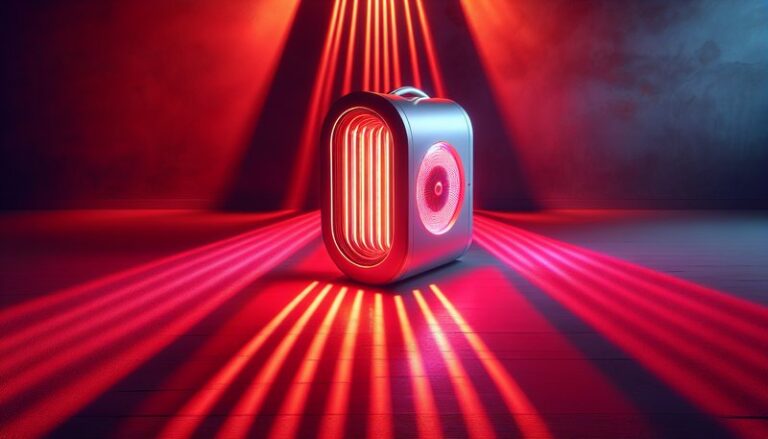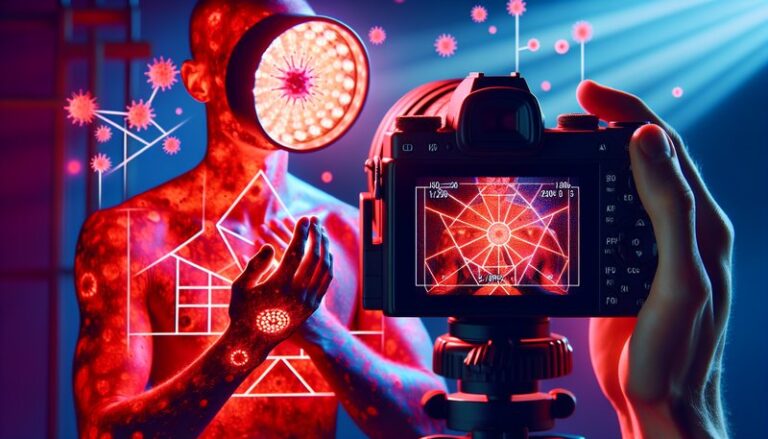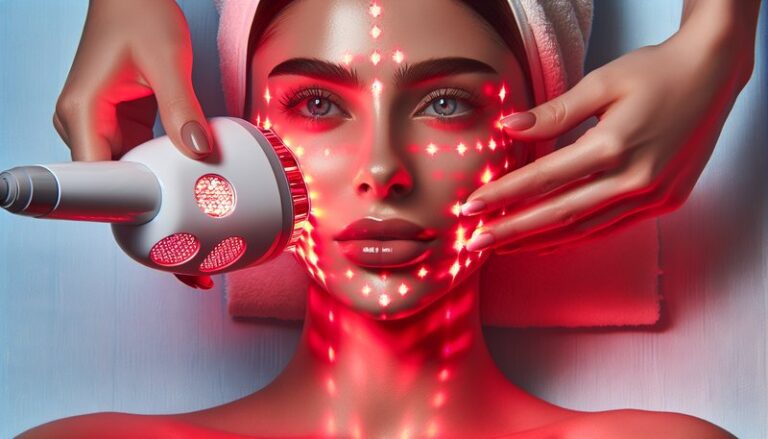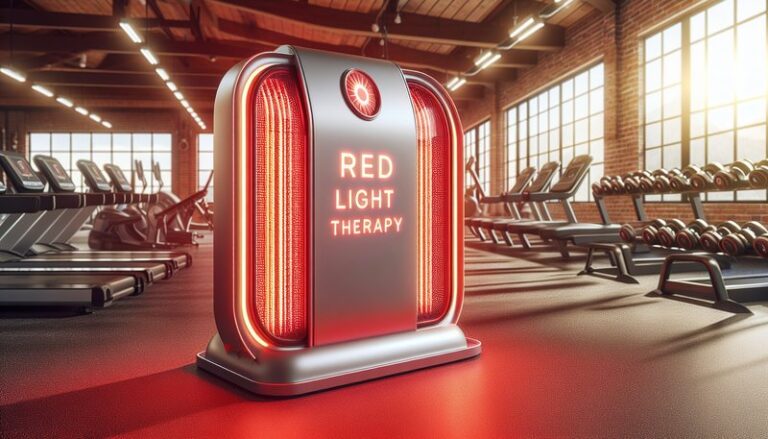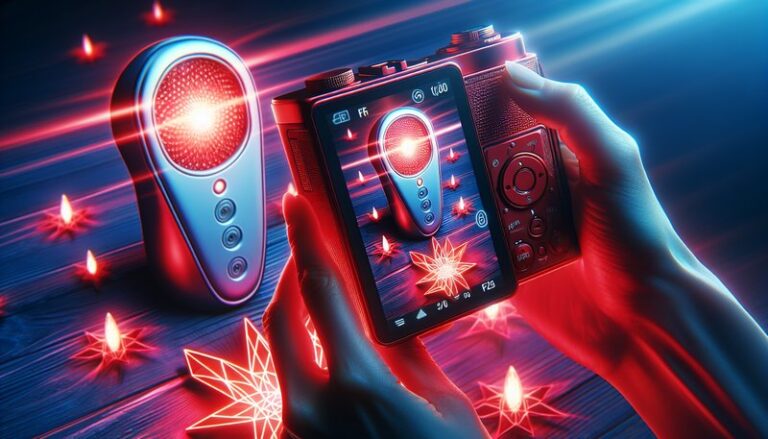Can Any Red Light Be Used For Red Light Therapy?
Can Any Red Light Be Used For Red Light Therapy?
Can any red light be used for red light therapy, or is it more nuanced than that?
This article will examine the intricacies of red light therapy (RLT), addressing whether any red light source can be effective for therapeutic purposes. We aim to clarify the characteristics that differentiate effective red light sources, the benefits of using proper equipment, and considerations before diving into this wellness trend.
Key Takeaways
- Not all red lights are created equal; specific wavelengths are necessary for effective therapy.
- Proper red light therapy devices are calibrated for skin penetration and cellular response.
- User safety and study-backed efficacy should guide your choices in red light therapy.
What is Red Light Therapy?
Red light therapy is a non-invasive treatment that utilizes specific wavelengths of light (typically between 600-650 nm for red light and 800-850 nm for near-infrared light) to promote healing and improve various skin and health conditions. This therapy works by enhancing cellular metabolism and stimulating the mitochondria in cells, which can lead to several benefits.
RLT has piqued the interest of health enthusiasts, dermatologists, and even athletes looking to improve recovery times. The technology extends beyond aesthetic applications—studies have suggested its potential for treating conditions like acne, psoriasis, and inflammation.
What are the Benefits of Red Light Therapy?
The following points explore the range of advantages associated with red light therapy.
For the full details, see Does Red Light Therapy Reduce Wrinkles?
Enhances Skin Health and Appearance
Red light therapy has been shown to promote collagen production, reduce wrinkles, and improve skin texture. For example, many users report a visible difference in skin tightness and elasticity after consistent treatments.
Accelerates Wound Healing
Studies indicate that red light can significantly shorten healing times for wounds and injuries. This property is instrumental in both clinical and home use, aiding recovery from minor cuts to muscle injuries.
Reduces Inflammation and Pain
RLT has been noted for its anti-inflammatory properties, making it beneficial for conditions like arthritis and tendonitis. Users often find relief from pain, leading to improved mobility and quality of life.
Improves Mood and Energy Levels
Beyond physical impacts, red light therapy may influence mood and mental well-being. Some users have reported reduced symptoms of depression and anxiety, making it a potential adjunct therapy for mental health support.
Is it Possible to Use Any Red Light Source for Therapy?
While red light therapy effectively harnesses light’s healing properties, not all red light sources are suitable for therapeutic use. Effective devices must emit the correct wavelengths and intensities to achieve desired outcomes.
What are the Advantages of Using Purpose-Built Devices?
Investing in a dedicated red light therapy device provides several advantages:
Precision in Wavelengths
The right devices target specific wavelengths known to stimulate cellular activity effectively, ensuring that users are maximally benefiting from their sessions.
Controlled Intensity and Delivery
Therapeutic devices are designed to deliver consistent light intensity accessible for effective treatment. This control enables users to rely on precise doses of light rather than the variable output from household bulbs.
Incorporated Safety Features
Professional devices often come with built-in safety features and guidelines, making it easier for users to adhere to recommended therapy lengths without overexposure.
Optimal Treatment Areas
Many devices are designed to accommodate various body areas, allowing effective targeting of specific problems, whether they concern facial skin, muscle pain, or systemic issues.
What are the Disadvantages of Using Non-Therapeutic Red Light Sources?
Using non-specific sources of red light can lead to several drawbacks:
Ineffective Wavelengths
Household bulbs or typical red lights may lack the specific wavelengths proven effective for therapy, rendering users unable to achieve their desired results.
Inconsistent Treatment
Regular light sources may not produce a consistent output, leading to varied treatments and potentially hardware causing user discrepancies in experience and results.
Safety Concerns
Home and standard lighting solutions are not regulated for therapeutic use, leaving users exposed to the risk of misuse, including overexposure or improper targeting of treatment areas.
What are the Things to Consider Before Using Red Light Therapy?
Before engaging in red light therapy, several factors should be evaluated to ensure safe and effective use.
Understand Your Specific Needs
Identify the purpose of your red light therapy. Whether for skin improvement or pain relief, knowing your goals can help choose the right device.
Research Device Specifications
Look for devices that specify the wavelength range and intensity levels. Reading user reviews and studies can guide your choice.
Consult a Professional
Before starting therapy, consulting with a healthcare professional can provide personalized advice and recommendations concerning potential contraindications or existing health conditions.
Explore the topic in Does Red Light Therapy Help Cellulite?
What are the Alternatives to Red Light Therapy?
If red light therapy seems unsuitable for your needs, consider these alternatives.
Cold Laser Therapy
This non-thermal form of laser treatment uses specific wavelengths to reduce pain and inflammation, similar to RLT without the heat.
LED Light Therapy
LED devices may offer a range of light colors, serving various purposes, including acne treatment or anti-aging, tailored to different skin concerns.
Ultraviolet Light Therapy
Primarily used for skin conditions like psoriasis, UV therapy targets specific skin issues and is effective when conducted under professional supervision.
Conclusion: Is it Recommended to Use Any Red Light for Therapy?
While red light therapy presents an innovative avenue for health and wellness, it is essential to use devices specifically designed for this purpose to ensure effectiveness and safety. Conventional red lights do not guarantee the desired therapeutic outcomes and may result in inadequate treatment. Investing in reputable, scientifically-based devices and consulting with professionals can significantly enhance the overall experience and success of red light therapy.
Frequently Asked Questions
Can I Use Regular LED Bulbs for Red Light Therapy?
Regular LED bulbs typically do not emit the specific wavelengths required for effective red light therapy, making them inadequate for therapeutic use.
How Often Should I Use Red Light Therapy?
Usage frequency depends on individual goals and device specifications, but many users benefit from sessions 3-5 times a week for optimal results.
Are there any side effects of red light therapy?
Generally, red light therapy is safe with few side effects, but overuse may cause temporary skin irritation or redness. Always follow usage recommendations.
Can red light therapy help with hair loss?
Some studies suggest that red light therapy can promote hair growth by stimulating follicles, making it a possible option for individuals experiencing hair thinning.
How long does it take to see results?
Results can vary based on individual conditions and treatment specifics; however, many users report noticeable improvements within a few weeks of consistent use.

